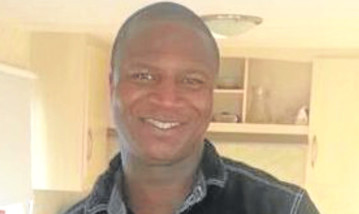The revelation that police used CS spray and PAVA spray on Sheku Bayoh must be central to the investigation into his death, his family’s lawyer has demanded.
The 31-year-old father-of-two lost consciousness and later died after he was arrested and restrained by police using handcuffs and leg restraints in Kirkcaldy at around 7.30am on Sunday May 3.
Officers are alleged to have used batons, CS spray which has been linked with several deaths in custody and the more potent PAVA spray on the bodybuilder.
Experts recently advised police forces that when the sprays are used, suspects should not be held down in the “prone” position, to avoid breathing problems.
Solicitor Aamer Anwar said the information which could be critical was not mentioned in a preliminary post-mortem report, although it is understood pathologists were briefed verbally.
He also vented the family’s anger that the nine officers involved have allegedly yet to give statements to the Police Review and Investigations Commissioner’s independent investigators.
Mr Bayoh’s family and partner Collette Bell have said police gave them five different versions of events, including that he was found dead in the street.
Mr Anwar said: “The family is concerned that the use of CS spray and PAVA spray should be central to the investigation.
“The family were told on the Sunday by Chief Superintendent Garry McEwan when he went to their house about the use of CS spray and PAVA spray and batons but the police have never stated that publicly.”
Mr Anwar said it was also vital that the police officers who attended the incident at the corner of Hayfield Road and Hendry Road, around a mile from Mr Bayoh’s home, come forward.
As well as the Crown pathologists, the family has instructed two of the country’s top pathologists, Dr Nat Cary, who was involved in the Soham murders trial, and Professor Anthony Bussitil, the pathologist in the Lockerbie disaster.
Mr Anwar said: “In order for the Crown pathologists and our independent pathologists to conclude on what the cause of death was, it is essential that these nine officers speak to the PIRC. Without that information, it is simply too difficult to reach a conclusion.”
Mr Anwar said it would be “unacceptable” for any member of the public involved in someone’s death to be still walking the streets without being interviewed 19 days later.
He said: “I make a direct appeal to those police officers: it is of the greatest importance, in order to protect themselves and public confidence in Police Scotland, that they immediately contact the PIRC and make themselves available.
“The longer this process goes on, the more difficult it is for the family.
“They have been unable to grieve for Sheku Bayoh while his body lies in a mortuary.”
Following a press conference by the family last week, the Scottish Police Federation issued statements saying a “petite” female officer sent to investigate reports of a man brandishing a knife was violently attacked and feared she was going to die.
Both Police Scotland and the PIRC declined to comment while the investigation continues.
